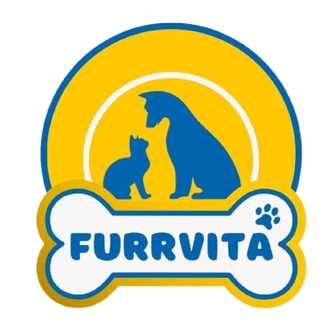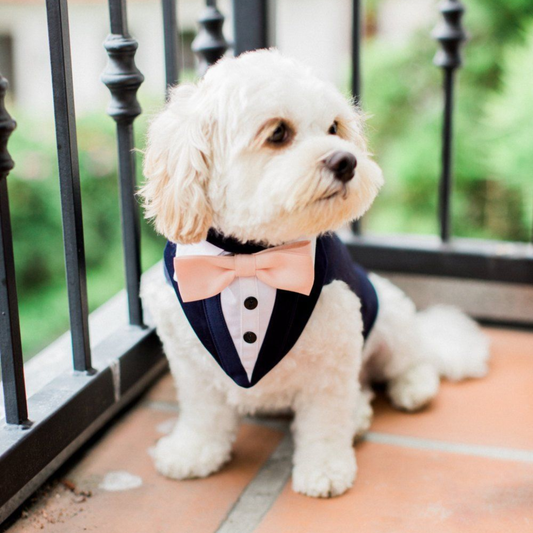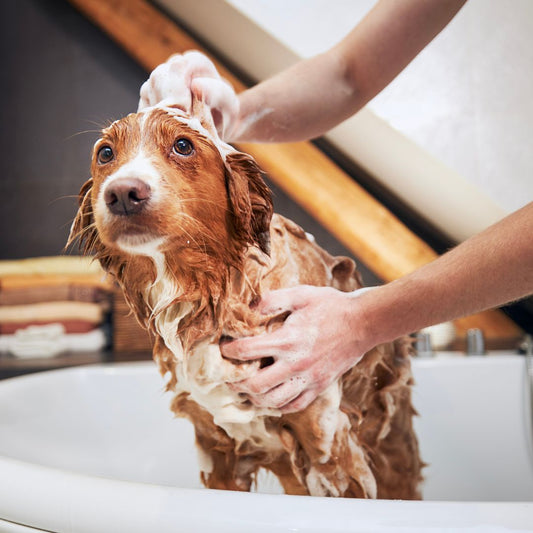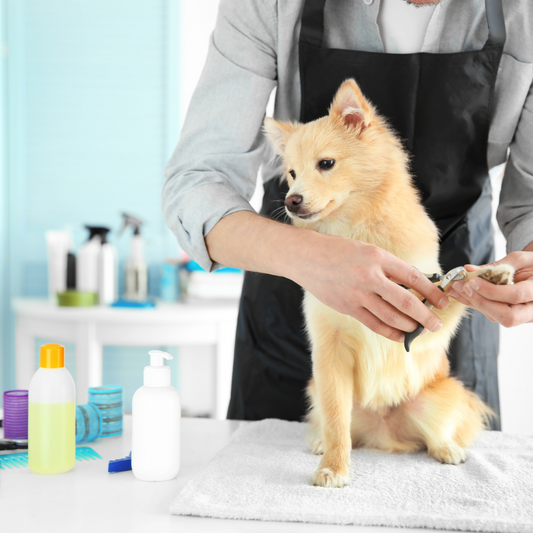Just like humans, dogs can experience dandruff those tiny white flakes that appear on their skin and coat. While it may seem harmless, dandruff can sometimes be a sign of an underlying health issue. Understanding why it happens and how to manage it can help your dog feel more comfortable and healthy.
What Is Dog Dandruff?
Dog dandruff is the result of dry, flaky skin that sheds from the dog’s body. It may appear on the back, tail, or near the head and can sometimes be accompanied by itching, irritation, or redness.
Some dogs may also develop “walking dandruff”, caused by mites, which require veterinary attention.
Common Causes of Dog Dandruff
Several factors can trigger dandruff in dogs:
-
Dry Skin
Low humidity or poor hydration can lead to flaky, rough skin. -
Allergies
Reactions to food, pollen, grooming products, or environmental factors can cause dandruff. -
Poor Diet or Nutritional Deficiency
Lack of omega fatty acids and essential vitamins affects skin and coat condition. -
Parasites (mites, fleas, ticks)
Some parasites irritate the skin, causing excessive scratching and flaking. -
Infections (bacterial or fungal)
Conditions like yeast infections can lead to oily flakes and odor. -
Underlying Medical Conditions
Issues such as thyroid disorders or seborrhea may cause chronic dandruff.
Symptoms to Look Out For
Dog dandruff may appear alone or along with the following symptoms:
- Persistent itching or scratching
- Redness or inflammation
- Dry, dull, or rough coat
- Excessive shedding
- Scabs or flaky patches
- Oily or foul-smelling skin (in severe cases)
If you notice these symptoms worsening, consult a veterinarian.
Effective Treatment Options
Treatment depends on the underlying cause, but the following approaches can help:
1. Medicated or Moisturizing Shampoo
Use a dog-specific anti-dandruff shampoo containing soothing ingredients like oatmeal or aloe vera. Avoid human shampoos — they can disturb a dog’s natural skin pH.
2. Improve Diet
A high-quality diet enriched with:
- Omega-3 and Omega-6 fatty acids
- Vitamins A, E, and biotin
supports healthy skin and coat.
3. Regular Grooming
Brushing helps remove flakes, improve blood circulation, and distribute natural skin oils.
4. Hydration
Encourage your dog to drink enough water. Hydration supports skin elasticity and reduces dryness.
5. Treat Parasites
If mites or fleas are present, veterinary-prescribed treatments are necessary.
6. Address Allergies
Identifying and eliminating triggers — food or environmental — may significantly reduce dandruff.
When to See a Veterinarian
Seek veterinary help if:
- Dandruff continues after home care
- There are signs of infection
- Your dog shows excessive itching or hair loss
- You notice unusual odor, redness, or sores
A professional diagnosis ensures proper treatment, especially for chronic or infection-based dandruff.









